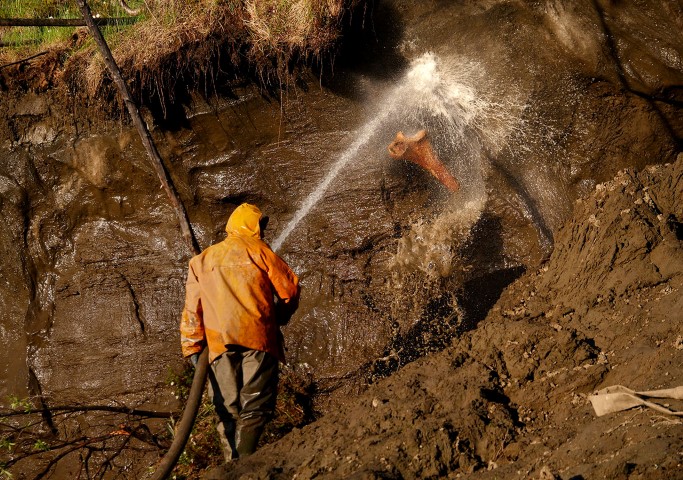The Guardian newspaper today reported on an interesting set of photographs today documenting one side effect of warming permafrost. Photographer Amos Chapple travelled to the East Siberian region to mine prehistoric ivory from permafrost. Locals had discovered tusks emerging from the river bank as rising temperatures coupled with erosion to uncover bones and tusks that had been buried for thousands of years.

The photographs are well worth a look, documenting the extreme (and extremely dangerous) lengths that the ivory miners (“tuskers”) will go in order to find ivory worth tens of thousands of dollars per piece. They carve caverns into the permafrost using high pressure hoses, leaving behind a pock-marked hillside and a river full of debris.
A successful find will net more than $50 000 in cash, and the carved products will be sold for millions, likely in China. While the payback for the few who strike lucky can be life changing, the damage to the local ecosystem, and the likely increase in permafrost degradation and carbon release due to this activity, means that the long-term regional and global consequences will far outweigh the local gain.